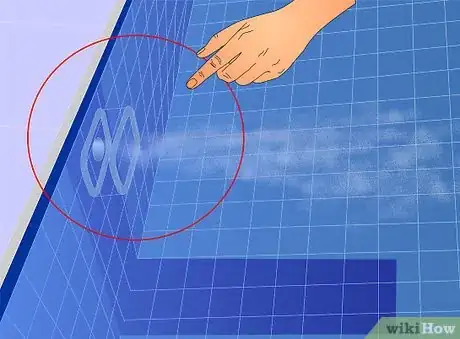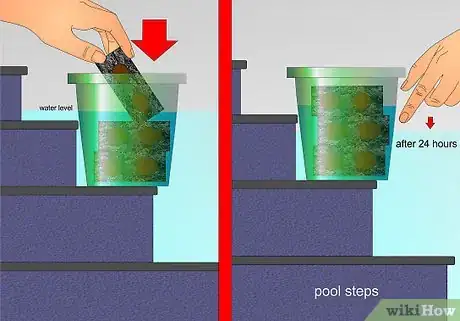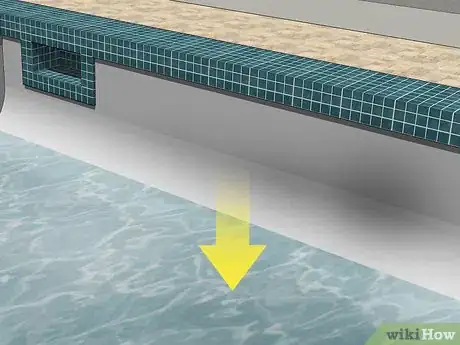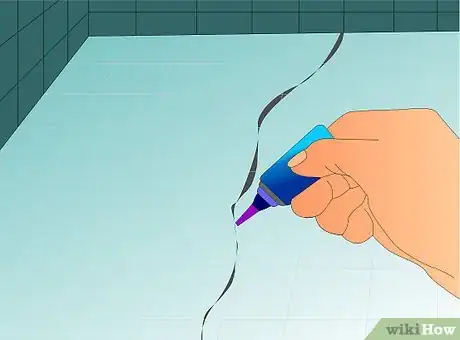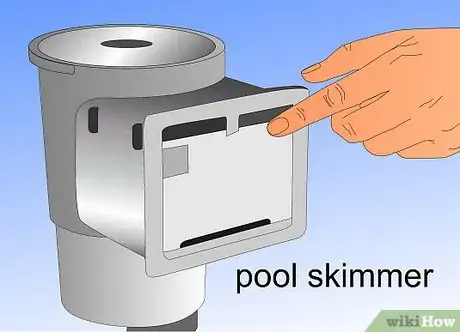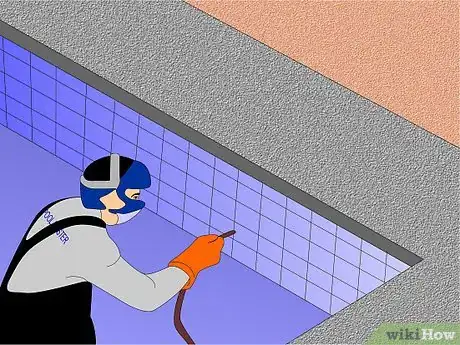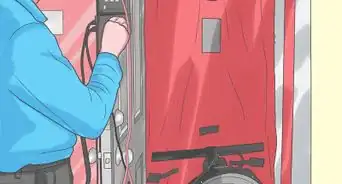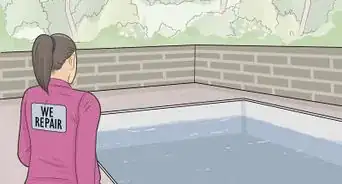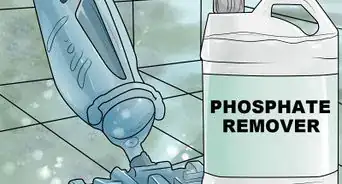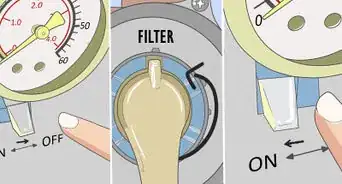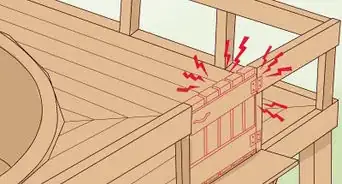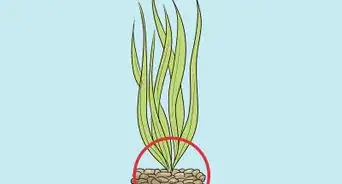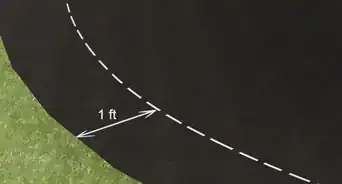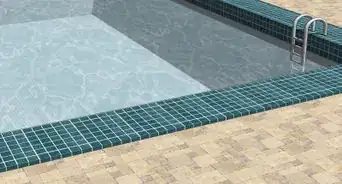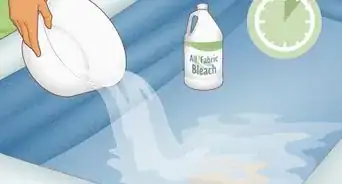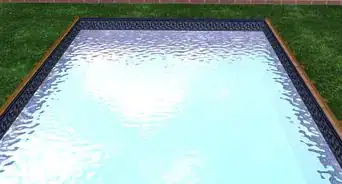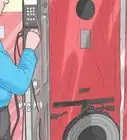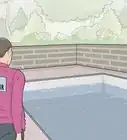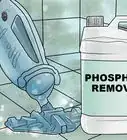This article was co-authored by Rob Litman. Rob Litman is a Landscaper, General Contractor, and the CEO of Vitoli Inc., a landscaping, hardscaping, ecoscaping, and swimming pool design company in Los Angeles, California. With over 20 years of experience in construction, Rob specializes in energy-efficient and drought-tolerant landscaping. He holds General Building Contractor (Class B) and Registered Pool/Spa Contractor Licenses. In 2007, Rob won House of the Year in Gardena, California.
wikiHow marks an article as reader-approved once it receives enough positive feedback. This article received 19 testimonials and 100% of readers who voted found it helpful, earning it our reader-approved status.
This article has been viewed 1,222,600 times.
It's natural for your pool to lose some water to evaporation, some to splash out, and some to backwashing your filter. But if you routinely need to add more than two inches of water to your pool per week, you may have a leak. Uh oh, right? Not so fast. Before you call the local pool tech, give your pool a once-over and determine whether you can't fix it yourself.
Steps
Locating the Leak
-
1Check the obvious first. Here's a list of common problems that could indicate a leak, in no particular order:[1]
- Are there any leaks at the equipment pad? Look closely at the filter, pump, heater and the pipe valves.
- Are there any wet areas around the pool? Check the ground for moisture. Walk around the pool, and by the pool and the equipment. Check for wet soil and sunken or eroding areas.
- Do you have a vinyl liner pool? Look for tears or separations around all the fittings, skimmers, returns, cleaner line, lights, steps and the corners.
-
2If you want to confirm a leak, try one of these techniques to double-check. If you suspect your pool is leaking, there are several ways to check.[2]
- Mark the water level of the pool at the skimmer. Use a piece of tape or grease pencil to mark the water level. Check the mark 24 hours later. Your pool should lose no more than 1⁄4 inch (0.6 cm) per day. Otherwise, a leak is indicated.
- Place a bucket filled with pool water on a pool step (weight it with a rock or brick). Mark the water level on both the inside and the outside of the bucket. Make sure the water levels are the same inside the bucket as the pool water level outside the bucket. Check the mark 24 hours later. If there's a greater drop in the line on the outside of the bucket, a leak in the pool is indicated. This test needs to be conducted with the pump on, then again with the pump off.
Advertisement -
3Determine the location of the leak. If you determine that your pool is losing water, turn off the filtration system and note where the water stops dropping. Vinyl Liner pools need to have water in them at all times! Stop this test if you have a liner pool and the water level is dropping rapidly. Start adding water and call a pool professional.[3]
- If the water stops at the bottom of skimmer opening, the leak is probably in the skimmer or filtration system (including the pipes). If you suspect you have a leak in the filtration system:
- Check, first, to see if you see air bubbles in the water in the return line when the pool's pump is running. If so, there is a leak in the suction side of the filtration system.
- Ensure the pump basket lid is on tight and that the lid o-ring is lubed and in good condition.
- If the water stops at the light, the leak is probably at the light housing.
- If the water drops below the light, then there may be a leak in the drain at the bottom the pool.
- If the pool is losing more water while the pump is running, the leak is on the return line side of the system. In this case, check the waste or backwash line for running water,
- If you suspect you have a leak in the skimmer, light, liner, look closely for something that looks like a crack, gap or tear.
- If the water stops at the bottom of skimmer opening, the leak is probably in the skimmer or filtration system (including the pipes). If you suspect you have a leak in the filtration system:
-
4Put a drop or two of dye test solution or some of your pH indicator test reagent near a suspected leak point. Do this with the pump shut off and the water still. See if the dye is sucked into the crack, gap or tear.[4]
Fixing the Leak
-
1Fix leaks you've identified. Your treatment of the leak will depend on its location and nature:
- Skimmer leaks: The most common leak is a separation between the plastic skimmer and the concrete pool. This is easily fixed with pool putty.
- Light leaks: Often the conduit pipe will come apart, break or separate from the niche. This is difficult to patch. There are various methods to patch a bad conduit connection. A two part epoxy that dries hard, with putty, silicone or caulk are ways to fix this problem.
- Liner leaks: Simply patch it with a vinyl liner patch kit. If underwater, use a wet patch kit.
-
2Note that many leaks are not detectable using the suggestions above. Now it's time to call a professional! Thanks to state-of-the-art technology, most pool or spa leaks can be found and repaired without major disruption.
- Compressed air is often used to pressurize a pipe. The air displaces the water in the pipe until it reaches the leak, at which point bubbles escape from the hole to reveal the problem area. Or, where a pipe fails to maintain a constant air pressure, a leak exists.
- Other times, a special television camera is snaked through plumbing pipes to spot leaks. Pool techs inject air into a pipe, then listen electronically for sounds of air escaping with a super-sensitive microphone.
- You should expect to pay about $150 to $1,250 for high-tech leak detection, depending upon the location and complexity of the problem. Repairs are extra.
-
3Understand pool plumbing basics to visualize what a pool tech might do to fix the leak. The basic configuration of a swimming pool plumbing and filtration system is simple. Water is pulled through the skimmer and main drains in the swimming pool by the pool pump. The water travels underground to the mechanical room where it passes through the pump strainer basket and is then pushed through the filter and heater as well as any other peripherals such as chlorinators. It is eventually piped back to the pool through the return lines.[5]
- In addition to these closed system lines, there are also a few additional aspects to the swimming pool plumbing system which do not operate in a closed (pressurized) system. Most swimming pools employ an open system (gravity fed, not pressurized) equalizer line that helps the pool pump to retain its prime during periods of low water level.
- This equalizer line is often forgotten about or ignored during renovations as replacing the line is a costly and time consuming enterprise. The equalizer line will connect to the bottom of the skimmer and the other end to either the main drains, or a side port in the wall of the pool near to the location of the skimmer. It is the pipe that leads from the bottom of the skimmer down to the main drains that is often overlooked. Since this is a non pressure line it would tend to leak less than a pressurized line, but on average this pipe can also be older than the rest of your pool plumbing system increasing it as a candidate for unexplained water loss.
- Plumbing systems are a constant source for water loss for a host of different reasons ranging from pipe material, installation quality, age, configuration and soil conditions. Before you begin to tear apart your plumbing system you need to first isolate the leak to determine if it is located in the plumbing system, or in the structure of the pool itself.
-
4Check to make sure the contractor has a business license. You can check with your local town or city building department. Some city and town require a trades license. Make sure you're calling a local contractor or company and not an internet marketing company. These companies sell your lead to a local contractor and increase your total cost.
- Most people think that if there are creases at the bottom of the pool, it is a failure of plaster, but that is not true. If a little plaster peels off, it is fine.[6]
- Only when the first step of the plaster is peeling to the point that the two coats are completely out and you can see the cement you have to replaster your pool.[7]
- Replastering it before that is just an aesthetic choice that you can make. Just like you let a roof be as it is until it leaks.
Community Q&A
-
QuestionI live in Minnesota and winterized my in-ground pool about three weeks ago. I covered the pool as part of the process. All the water has drained out except about three feet in the deep end of the pool. What should I do?
 Community AnswerThe leak is probably in the pipe leading from the drain back up to the skimmer piping that leads to the pump. Most likely the pipe is cracked/broken right at the current water level. You should have noticed this much leakage prior to closing the pool.
Community AnswerThe leak is probably in the pipe leading from the drain back up to the skimmer piping that leads to the pump. Most likely the pipe is cracked/broken right at the current water level. You should have noticed this much leakage prior to closing the pool. -
QuestionI can hear water running in the sand filter. What does that mean?
 Community AnswerYou have a broken lateral and will quickly get a hole worn into the filter canister.
Community AnswerYou have a broken lateral and will quickly get a hole worn into the filter canister. -
QuestionHow do I find a leak in a pool?
 Community AnswerUse a little dye in the water to show you the flow of the water's direction. You should be able to see quickly if water is leaking out.
Community AnswerUse a little dye in the water to show you the flow of the water's direction. You should be able to see quickly if water is leaking out.
References
- ↑ http://www.poolleakexperts.com/pool_owners/solutions/find_leak_myself.php
- ↑ https://www.swimuniversity.com/pool-leak/
- ↑ https://www.poolcenter.com/leaks
- ↑ https://poolonomics.com/find-pool-leak/
- ↑ http://www.inyopools.com/Blog/new-pool-owners-ultimate-pool-basics-guide/
- ↑ https://poolresearch.com/when-to-replace-inground-pool/
- ↑ https://poolresearch.com/when-to-replace-inground-pool/
About This Article
If you suspect there’s a leak in your swimming pool, check for obvious signs of where the leak might be, such as wet areas around the pool or water seeping out around the filter or pump. If you’re still not sure where the leak is, turn off the pump and observe what happens. For instance, if the water stops leaking out once it reaches the bottom of the skimmer opening, the leak is likely around the skimmer or filtration system. Or, if it stops at the light in your pool, the leak may be around the light housing. If you think the pool is leaking at a specific spot, test it by turning off the pump and putting a few drops of dye in the water near the suspected leak. If there is a leak there, you should see the dye getting sucked out through the opening. For tips on fixing a leak, read on!
